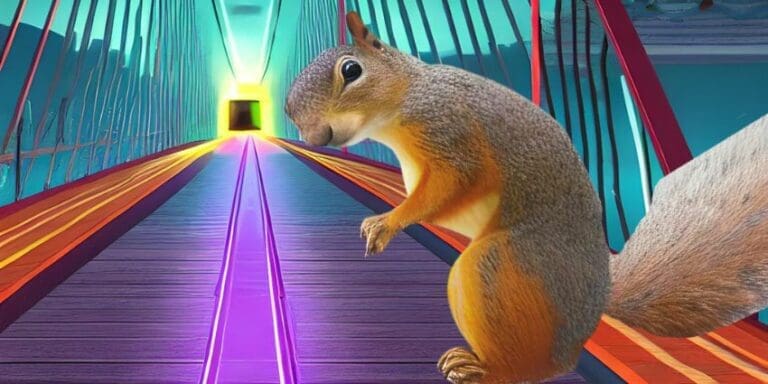What is the Most Interesting Feature of a Squirrel? Find Out!
When we think of squirrels, our minds tend to conjure images of furry little rodents flitting about parks and gardens, hoarding acorns and chattering away. However, there’s more to these fascinating creatures than meets the eye. From their unique physical traits to their awe-inspiring acrobatic abilities, squirrels are truly remarkable animals.
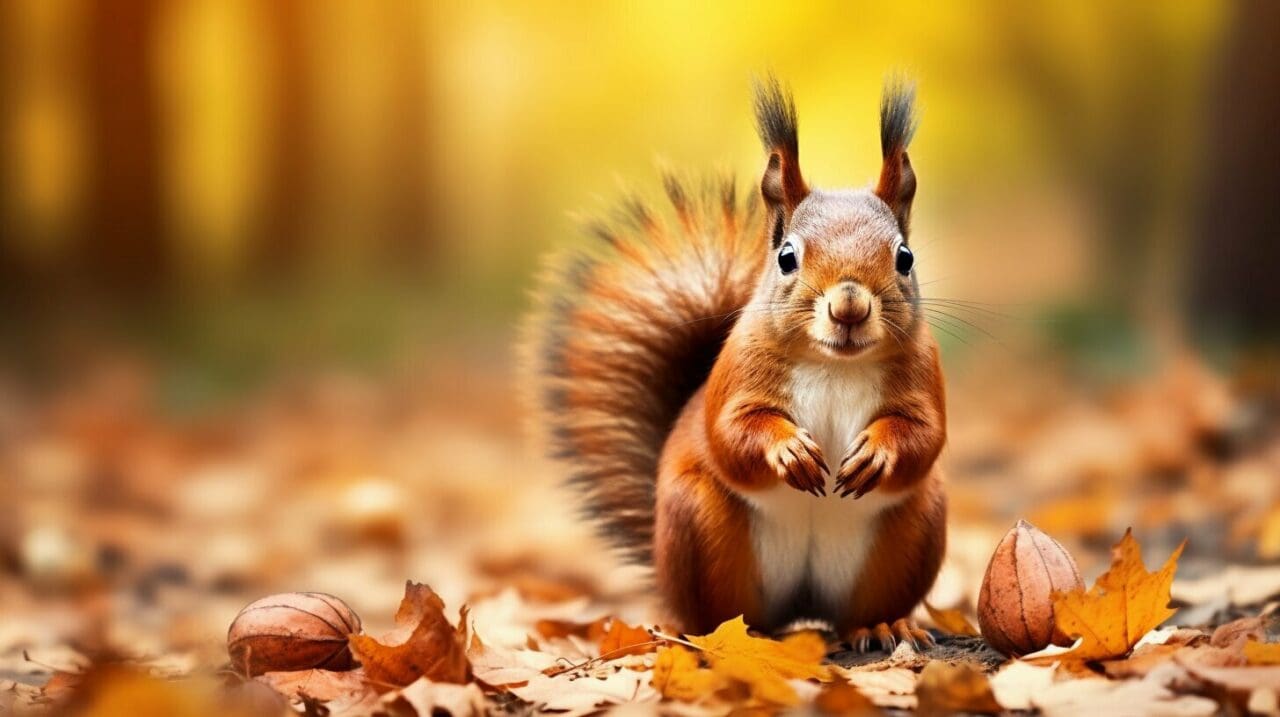
What is the most interesting feature of a squirrel? It’s hard to pinpoint just one, so let’s dive into the various characteristics that make squirrels so captivating.
Key Takeaways:
- Squirrels possess a multitude of interesting and unique traits.
- From their behavior to their physical characteristics, squirrels are truly fascinating creatures.
Squirrel Behavior: An Intriguing Display of Adaptations
When it comes to surviving in the wild, squirrels have some pretty impressive tricks up their sleeves. These bushy-tailed creatures are known for their quick movements, but their adaptability is equally remarkable. From their foraging habits to their social interactions, squirrels exhibit a range of behaviors that showcase their incredible ability to adapt.
Adapting to Food Shortages
Squirrels are frequently faced with food shortages, especially during the winter months when sources of food are scarce. To cope with this challenge, squirrels are able to store and retrieve food for later use. In fact, squirrels are known for their impressive memory and can easily remember thousands of hidden food caches. When food becomes particularly scarce, squirrels will also turn to different food sources, such as acorns or pine cones, that are more readily available.

Intelligent Communication
Squirrels are social animals and have developed various methods of communication to interact with each other. One way they communicate is through vocalization. Squirrels make different sounds to alert others to potential threats or to signal food availability. They also use their tails to communicate, by twitching or flicking them to indicate different emotions or intentions. Additionally, squirrels use scent marking to communicate with others, leaving a scent trail that can help guide other squirrels to food sources or warn them of danger.
Surviving in Urban Environments
As urbanization continues to encroach on their habitats, squirrels have demonstrated an amazing ability to adapt to living in urban environments. They have learned to scavenge for food and make use of artificial structures, such as buildings and highways, to navigate their surroundings. Squirrels have also become bolder in their interactions with humans, often approaching people in search of food or other resources.
Overall, the behavior of squirrels demonstrates their incredible ability to adapt to their environment. From their impressive memory and communication skills to their resourcefulness in the face of food shortages, squirrels are truly remarkable creatures.
Intelligence in a Nutshell: The Brilliance of Squirrels
Don’t underestimate squirrels, for these fluffy critters are more than just cute faces with bushy tails! In fact, they are incredibly intelligent and possess remarkable problem-solving skills that would make even the most advanced AI algorithms envious.
Studies have shown that squirrels have excellent memory, able to store and recall information about their surroundings and the location of food sources. They also exhibit impressive adaptation skills, able to modify their behavior and food preferences to suit changes in their environment.
One of the most interesting examples of squirrel intelligence is their ability to deceive potential predators. When threatened, squirrels will often pretend to bury their food in one location while hiding it in another, leading their predators on a wild goose chase. This behavior demonstrates an incredible level of strategic thinking and deception.
But perhaps the most impressive display of squirrel intelligence is their skill in solving puzzles. In a study conducted by the University of Exeter, squirrels were presented with a puzzle that required them to pull a lever to release a treat. After some trial and error, the squirrels were able to figure out the solution and repeat it consistently, demonstrating their problem-solving abilities.
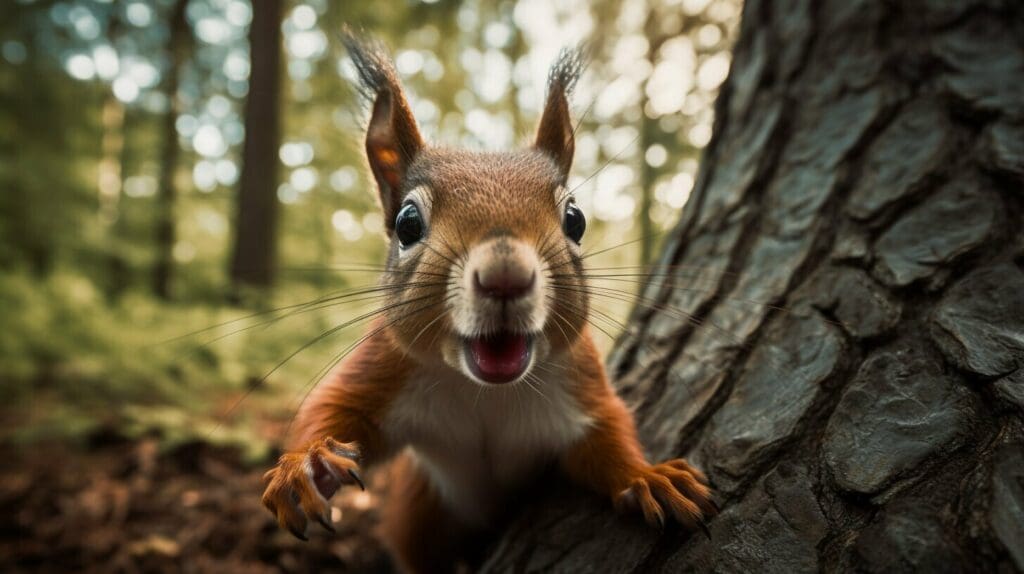
So, the next time you see a squirrel scampering up a tree or burying a nut, remember that these small creatures are far more intelligent than they appear. Whether it’s their exceptional memory, adaptability, deception skills, or problem-solving abilities, squirrels are truly brilliant in their own right.
Unveiling Squirrel Anatomy: Beyond Cute Fluffiness
While squirrels may be known for their adorable fluffy tails and big eyes, their anatomy is much more complex and intriguing than meets the eye.
One of the most notable features of the squirrel’s anatomy is their sharp and powerful claws. These claws enable them to climb trees and hang onto narrow branches with ease, as well as dig through soil to find buried nuts and seeds. Additionally, squirrels have a unique ankle joint that can rotate up to 180 degrees, allowing them to climb down trees headfirst and run along narrow branches in any direction.
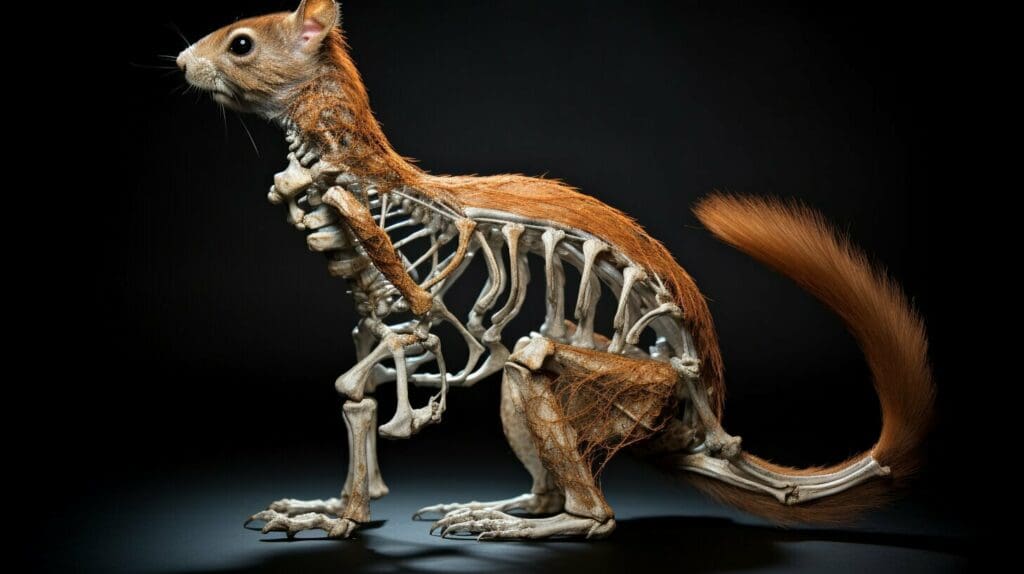
Another interesting aspect of the squirrel’s anatomy is their teeth. Squirrels have four front teeth that never stop growing, which is why they constantly gnaw on objects to keep them worn down. Additionally, the back teeth of squirrels are specially adapted for grinding and chewing tough nuts and seeds.
Finally, it’s worth mentioning the size and structure of the squirrel’s brain. Despite their small size, squirrels have relatively large brains for their body size, and their brains are specifically adapted to help them solve problems and remember where they have hidden their food stashes.
Overall, the anatomy of squirrels is a testament to their incredible adaptability and survival skills in various environments and situations.
Acrobatic Marvels: The Agile World of Squirrels
When it comes to agility, squirrels are the undisputed champions of the animal kingdom. These cute creatures can twist and turn in mid-air, run along narrow branches, and leap from tree to tree with impressive ease.
But what makes squirrels so agile? It all comes down to their anatomy. Squirrels have powerful hind legs that allow them to jump great distances. They also have sharp claws that help them grip onto tree bark and other surfaces.
One of the most impressive acrobatic feats of squirrels is their ability to descend a tree headfirst. They do this by rotating their ankles and spreading their toes to create a wider grip on the tree trunk. This allows them to control their descent and land safely on the ground.
But that’s not all – squirrels can also run upside down along tree branches thanks to their unique ankle joints. This allows them to forage for food in places that other animals can’t reach.
A Squirrel’s Tail: A Balancing Act
Another factor that contributes to a squirrel’s acrobatic abilities is its tail. A squirrel’s tail acts like a rudder, helping it to balance and steer while jumping or climbing. The tail also serves as a communication tool, signaling to other squirrels about potential predators or food sources.
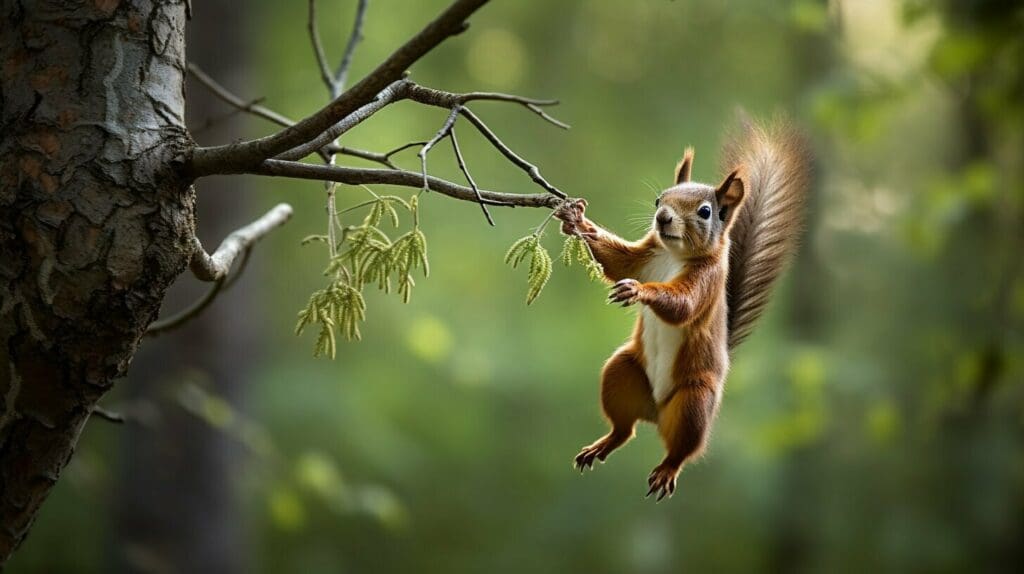
“Squirrels are like little ninjas,” says wildlife expert John Smith. “They can maneuver through the trees with incredible speed and agility, and they make it look effortless.”
It’s no wonder that squirrels have become so beloved by humans – their acrobatic abilities and charming personalities make them a joy to watch. So the next time you see a squirrel, take a moment to appreciate the incredible agility of these little daredevils!
Squirrel Habitat: Where Nature’s Daredevils Call Home
These little critters can be found in a variety of habitats, from dense forests to urban parks. With their amazing adaptability, squirrels have managed to thrive in environments all across the globe. They are found in North and South America, Europe, Asia, and Africa.
In the wild, squirrels build their nests, or dreys, out of sticks and leaves. These dreys can be found high up in the branches of trees, providing shelter and protection from predators. In urban areas, squirrels have adapted to building nests in attics, walls, and other man-made structures.
Some species of squirrels, such as the Arctic ground squirrel, hibernate during the winter months, while others, such as the grey squirrel, remain active all year round.
Squirrels are also well-known for their amazing tree-climbing abilities. They have sharp claws and strong, muscular legs that allow them to climb trees with ease. They can also jump incredible distances, enabling them to travel from tree to tree in search of food and shelter.
Without a doubt, squirrels are nature’s daredevils. They fearlessly navigate their way through the trees, making acrobatic leaps and bounds that would make even the most seasoned parkour athlete envious. Their agile movements and lightning-fast reflexes make them one of the most fascinating animals to watch in their natural habitat.
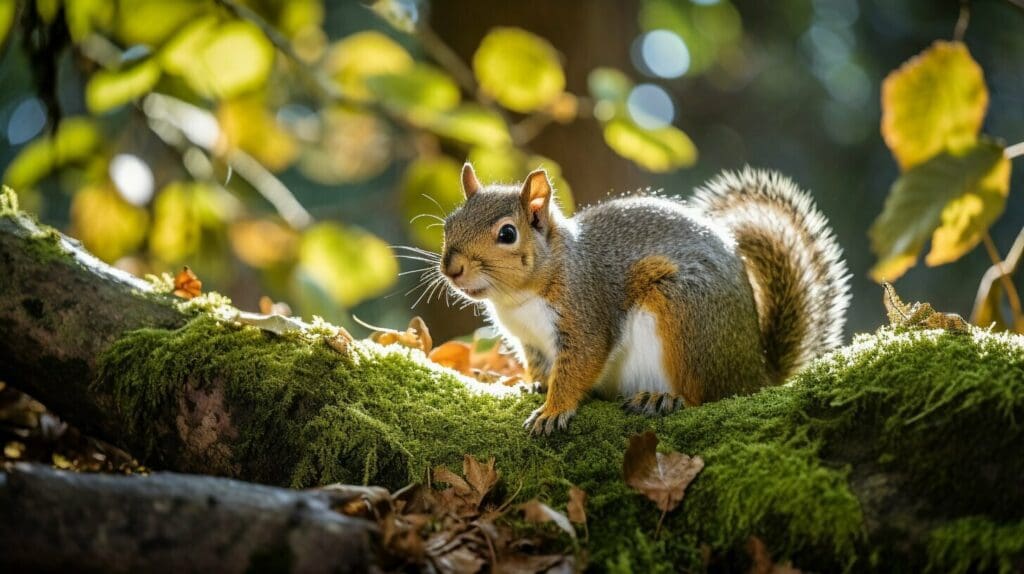
From the rainforests of South America to the bustling cities of North America, squirrels have proven to be incredibly adaptable creatures. Whether they are building nests in the treetops or scampering across power lines, they continue to captivate and amaze us with their unique characteristics and behaviors.
A Recap of Unique Squirrel Characteristics
Throughout this article, we have explored the fascinating world of squirrels and their incredible adaptations, behaviors, and physical characteristics. From acrobatic feats to problem-solving abilities, these creatures are much more than just cute and fluffy.
One of the most interesting features of squirrels is their agility and acrobatic skills. Whether they are leaping from tree branch to tree branch or balancing on a telephone wire, squirrels can pull off some impressive stunts that leave even the most seasoned gymnasts in awe.
Another unique characteristic of squirrels is their intelligence and problem-solving abilities. From learning how to navigate complex mazes to devising clever strategies for obtaining food, these little animals are much smarter than they may seem.
But it’s not just their athleticism and intelligence that make squirrels so remarkable. Their physical characteristics, such as their sharp claws and bushy tails, are also adaptations that help them survive in their various habitats.
Speaking of habitats, squirrels can be found in a range of environments, from forests and parks to urban areas and even deserts. This adaptability is yet another testament to their impressive skills as nature’s daredevils.
So next time you spot a squirrel scurrying up a tree or balancing on a narrow ledge, take a moment to appreciate all of the unique and captivating characteristics that make these creatures so fascinating.
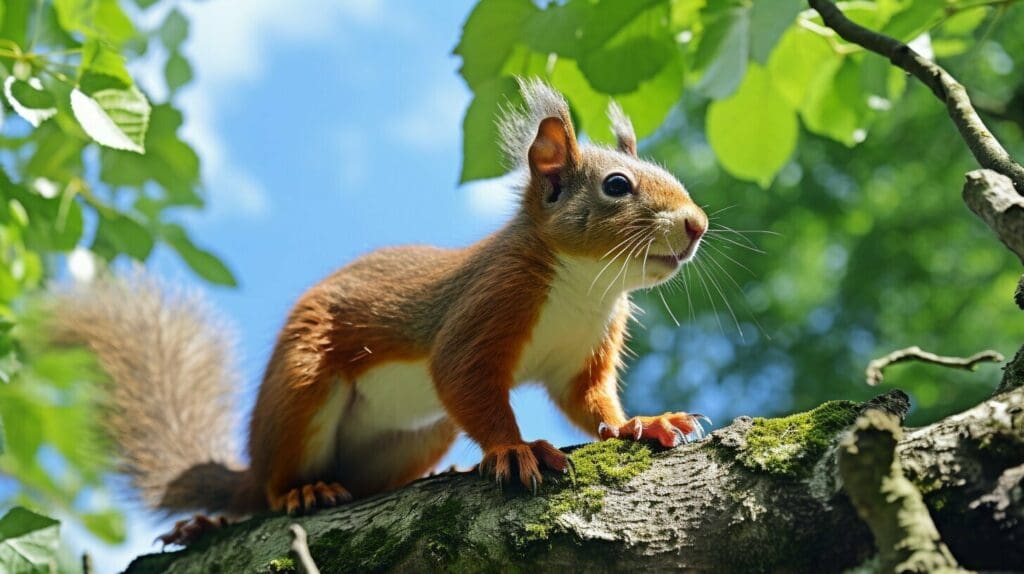
Conclusion
In conclusion, squirrels are a fascinating example of nature’s creativity. From their acrobatic skills to their problem-solving abilities, these furry critters have a lot to offer. But what is the most interesting feature of a squirrel? Is it their agility, their intelligence, their unique behaviors, or their physical characteristics? The truth is, it’s all of the above! Squirrels are a unique and diverse species, with each one having its own personality and traits. Whether they’re frolicking in the trees or burying nuts in the ground, squirrels always manage to captivate our attention. So, the next time you see a squirrel, take a moment to appreciate all of the marvelous traits that make them such amazing creatures. Who knows what other secrets these furry daredevils are hiding?FAQ
Q: What are some interesting features of squirrels?
A: Squirrels possess a multitude of fascinating traits, including bushy tails, sharp claws for climbing, and impressive jumping abilities.
Q: How do squirrels adapt to their environment?
A: Squirrels showcase adaptive behavior such as hoarding food for the winter, building intricate nests called dreys, and using their tails for balance while navigating treetops.
Q: Are squirrels intelligent creatures?
A: Yes, squirrels exhibit high levels of intelligence and problem-solving skills. They are known to remember the locations of their hidden food caches and demonstrate innovative techniques to access hard-to-reach food sources.
Q: What can you tell us about squirrel anatomy?
A: Beyond their cute fluffiness, squirrels have sharp incisors for gnawing on nuts and tree bark, large eyes for excellent vision, and strong hind legs for their impressive jumping abilities.
Q: How agile are squirrels?
A: Squirrels are acrobatic marvels, capable of leaping between trees with great precision, performing mid-air somersaults, and effortlessly scampering along narrow branches.
Q: Where do squirrels live?
A: Squirrels can be found in various habitats such as forests, woodlands, urban parks, and even suburban gardens. They adapt to their surroundings by building nests and utilizing available food sources.
Q: What are some unique characteristics of squirrels?
A: Squirrels are known for their remarkable features, including their ability to communicate through tail movements, their keen sense of smell, and their adaptability to urban environments.




